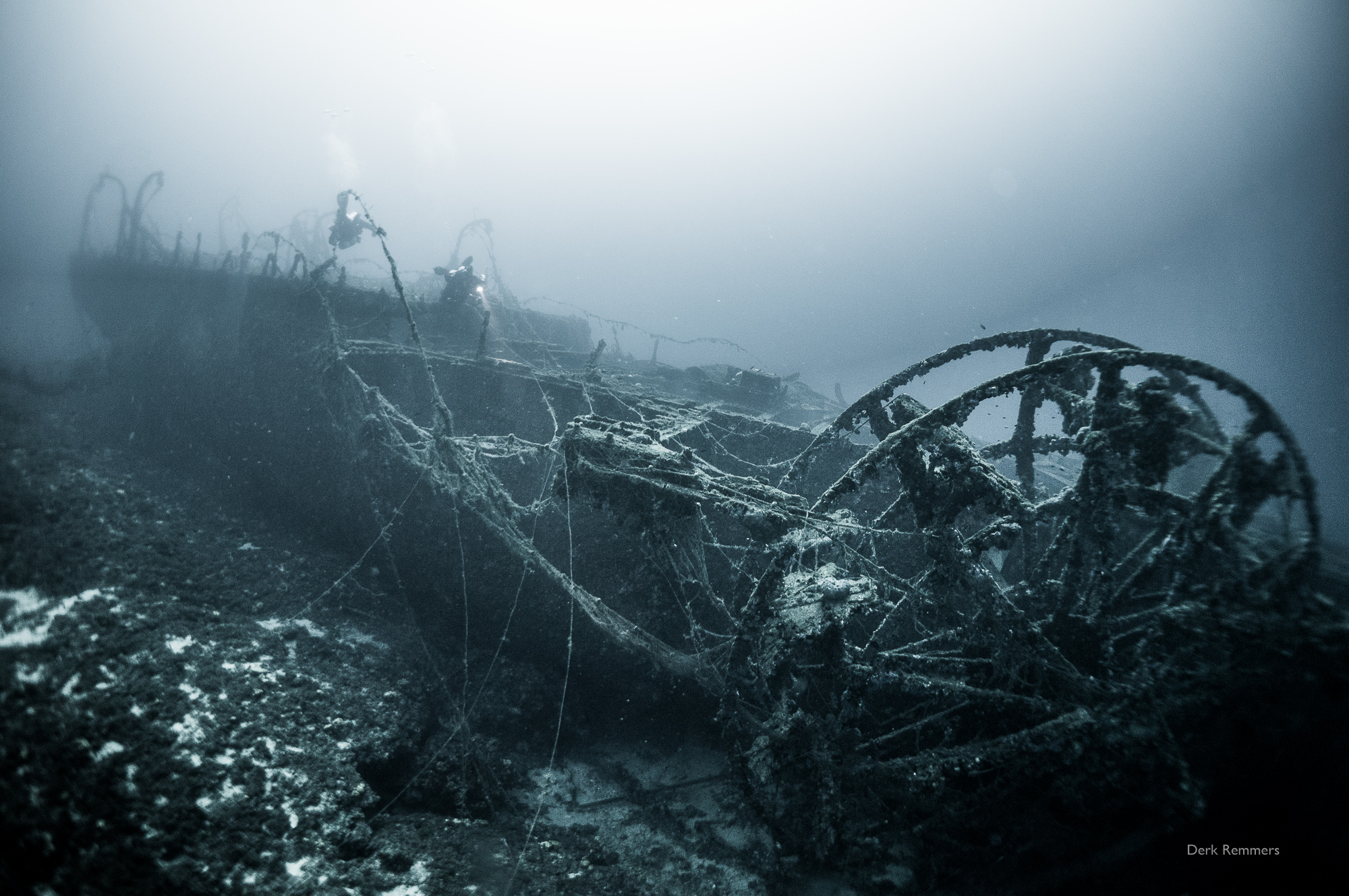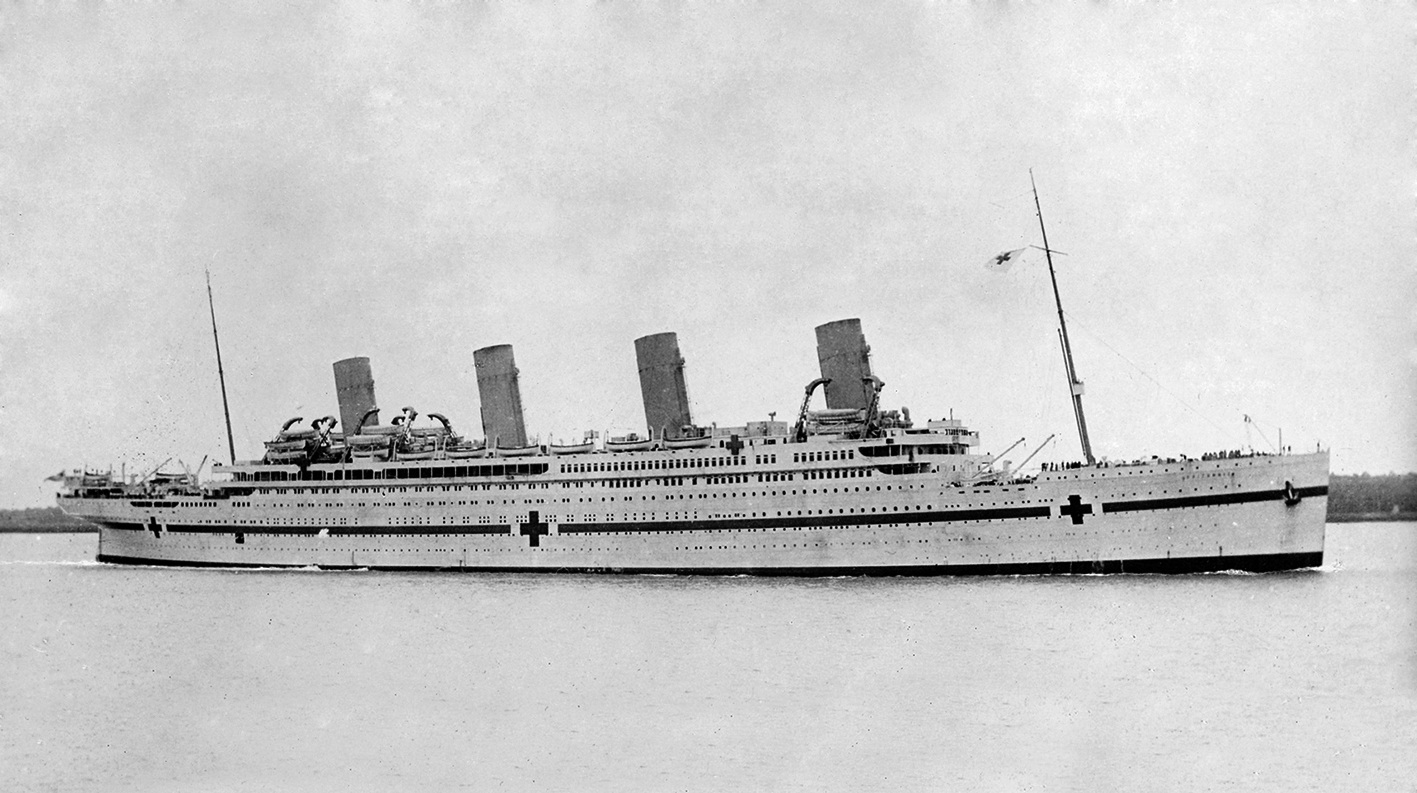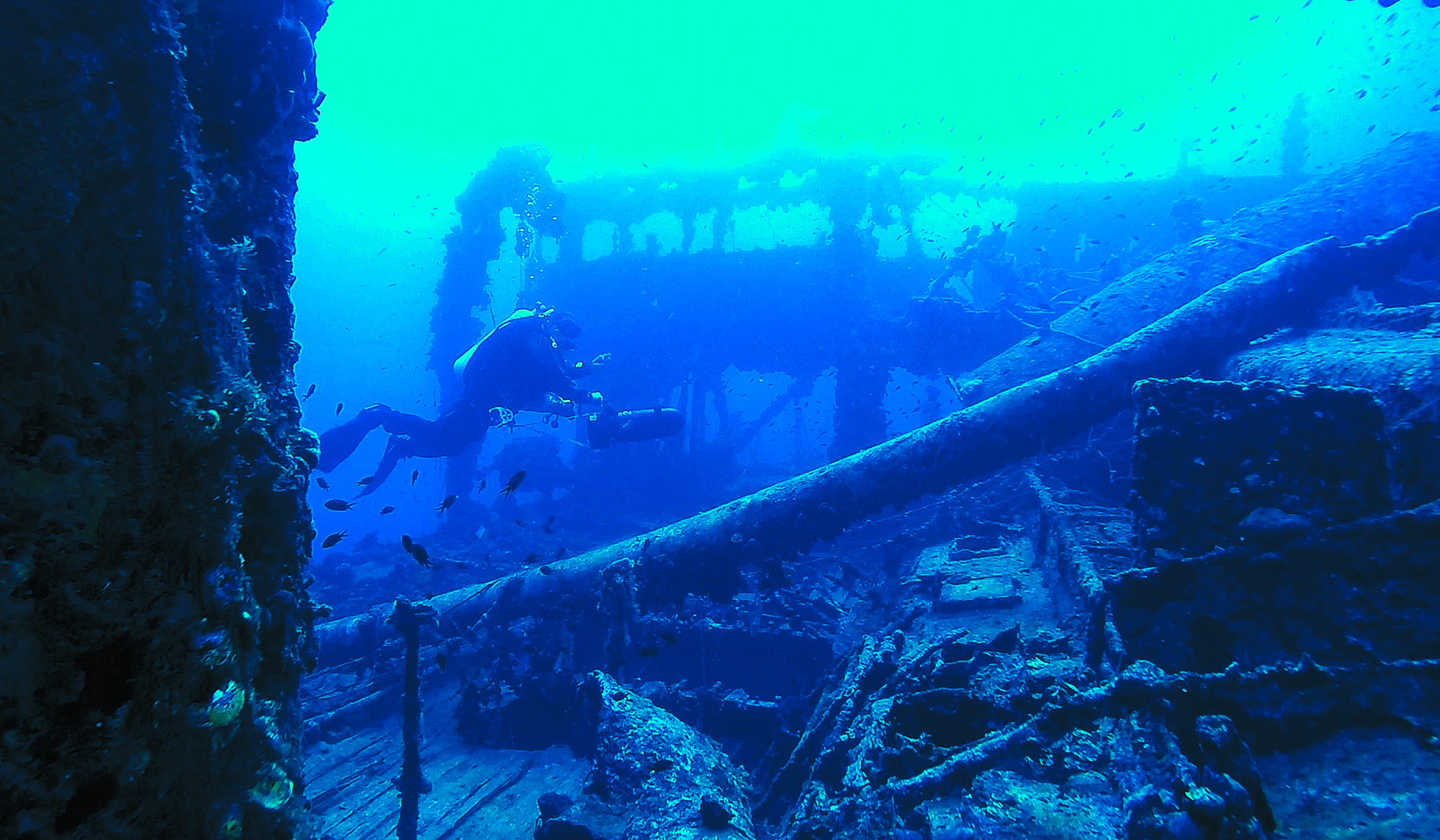
Kathimerini Greece Newsroom
Jacques-Yves Cousteau would probably have been surprised to learn that the wreck of the World War I Britannic (the sister ship of the legendary Titanic) he discovered in 1975 off southwestern Kea would be listed as an underwater historical site almost 50 years later, becoming one of a handful of such marine parks in the world.
The Britannic, however, is not the only wreck that has been granted this status, as Greek authorities have also proclaimed the luxury liner Burdigala and the Greek paddle steamer Patris underwater historical sites, both of which also lie off the coast of the same Cycladic island. It is a development that is expected to have multiple benefits for Greek tourism, but also for the island of Kea in particular.
According to Yiannis Tzavelakos, the Municipality of Kea councilor in charge of diving tourism, a fourth wreck is due to be added soon, that of the German Junkers Ju 52 airplane.
‘Recreational diving is an activity that is drawing interest from an increasing number of people worldwide and diving tourism is on a steady upward trend’
Tzavelakos is the owner of the Keadivers center and was the catalyst of the project, achieving the by no means easy goal of mobilizing and securing the cooperation of the ministries of Culture, Tourism and Shipping, along with support from the highest echelons of the Greek government, but also of the municipal authority and a slew of other authorities who had to be brought together for the creation of this historic underwater park.
“The new marine park places three protection zones around the historical monuments, prohibiting all forms of fishing,” noted Tzavelakos, adding that “the island is finally acquiring protected marine zones. We estimate that in three to five years the [fish] stocks will increase dramatically to unbelievable levels for the Mediterranean.”
Major attraction
Thanks to the new regulatory framework, visitors from all over the world who have a valid diving certificate will be able to explore the wrecks, all three of which are internationally renowned and a major attraction both for history buffs and experienced scuba divers. Before the introduction of the new legislation, anyone wanting to dive down to the wrecks had to go through a long and complicated process of getting a special license. And not only was it costly too, it was also tied up with restrictions. This is not the case anymore, as under the new rules, anyone who has the certification to dive to the sites can do so on organized tours conducted by dive centers that have been licensed for this purpose by the Shipping Ministry. The ministry has also undertaken the task of protecting and guarding these sites, its chief, Yiannis Plakiotakis, told Kathimerini when contacted about the issue.
The framework for promoting dive tourism in Greece was first established in May 2020. For Culture Minister Lina Mendoni, the creation of underwater archaeological sites and wreck monuments is a distinct and important chapter,” while their contribution to the sustainable development of coastal and island areas may prove significant.
“Recreational diving is an activity that is drawing interest from an increasing number of people worldwide and diving tourism is on a steady upward trend. What’s more, turnover in the European diving industry is now in the billions of euros,” she added.
“Creating underwater archaeological sites was a bold endeavor for the ministry and a challenge with very specific demands and conditions, which are dictated by three necessities: public safety, the preservation of the natural environment and the protection of cultural heritage. Every marine area must first be well documented and marked in order to reduce as much as possible the chance of an accident, the possibility of damage to the monument or the possibility of illegal archeological activities,” underlined Mendoni.
Dive tourism has the potential to become an important source of strength for Greek tourism.
“Thanks to the opening up of historic wrecks and under the condition that the rest of the historic wrecks on the list of 91 sites that have been submitted are approved, we are looking at attracting tens of thousands of divers from all over the world,” said Tzavelakos.
It is also a competitive product in theme tourism that will give Greece a decided edge.
“We supported the municipal authority’s request from the get-go by lifting obstacles and accelerating the relevant procedures – which had been stagnant for decades – so that Kea’s wrecks could turn the island into a reference point for global diving tourism,” Tourism Minister Vassilis Kikilias told Kathimerini.
“We have made a commitment, after all, to transform Greece into a paradigm of sustainable development and at the Ministry of Tourism we have made progress in implementing this strategy, in cooperation with local government authorities and the competent agencies,” said Kikilias.
“Kea is among our country’s top diving destinations, by combining, in a very special way, interest in historical research and a rich underwater life,” added the minister.
He also pledged that money from the Recovery Fund will be used to bankroll the infrastructure needed for bolstering other alternative forms of tourism – with diving being among them – in order to “showcase the special characteristics and cultural heritage of each area.”

The Greek paddle steamer Patris sank in 1868 after hitting a reef off the bay of Koundouros carrying 400 passengers and crew from the port of Piraeus to the Cycladic capital of Syros. [Derk Remmers]

A product of vision, hard work and commitment
The Kea dive park was an ambitious endeavor that took a lot of hard work and vision, but also required a lot of people to do a lot of exploring in uncharted waters over the decades, stressed Yiannis Tzavelakos. First among them was Jacques-Yves Cousteau and his crew on the legendary Kalypso, who discovered the HMHS Britannic – which was operating as a hospital ship when it sank as a result of an exploding mine in 1916 – lying at a depth of 118 meters.
“In the years since, several diving missions have been carried out during which important documentary evidence on the wreck was collected, books have been written and documentaries films. All of it with the support and supervision of the Ephorate of Underwater Antiquities,” explained the Kea municipal councilor.
In 2008, a team made up of Giorgos Papatheodorou, Vyronas Riginos, Areti Kominou, Dimitris Galon, Lazaros Galonis and Nikos Karatzas carried out a dive mission down to an unidentified wreck outside the port of Korissia and were able to gather evidence proving it to be the SS Burdigala, which sank after hitting a German mine, also in 1916. They were also able to spot the outline of an airplane near the ocean liner’s wreck, at a depth of 64 meters. That turned out to be the German transport craft Junkers 52 number 6590, which went down during World War II.
Another pivotal event was a big international conference that took place on Kea in 2016 to mark the centenary of the sinking of the Britannic and the Burdigala and which was where the groundwork was laid for the creation of the island’s underwater historical site.
“It is six years later and we have managed to fulfill this vision, to do something quite special, with transparency and without spending any money from the municipality, the regional authority or from the public coffers. A lot of people worked diligently, putting in a truly tremendous effort to this end,” said Tzavelakos.
“We want to believe that the park will be guarded properly and policed adequately when and if this is necessary because it is a valuable asset to the island and aspires to become an important attraction,” he added

The luxurious ocean liner SS Burdigala struck a mine laid by a German U-boat while en route from Thessaloniki to Toulon in 1916 after being called for war service by the French government. [Armando Ribeiro]
Written by Ilias Bellos
































